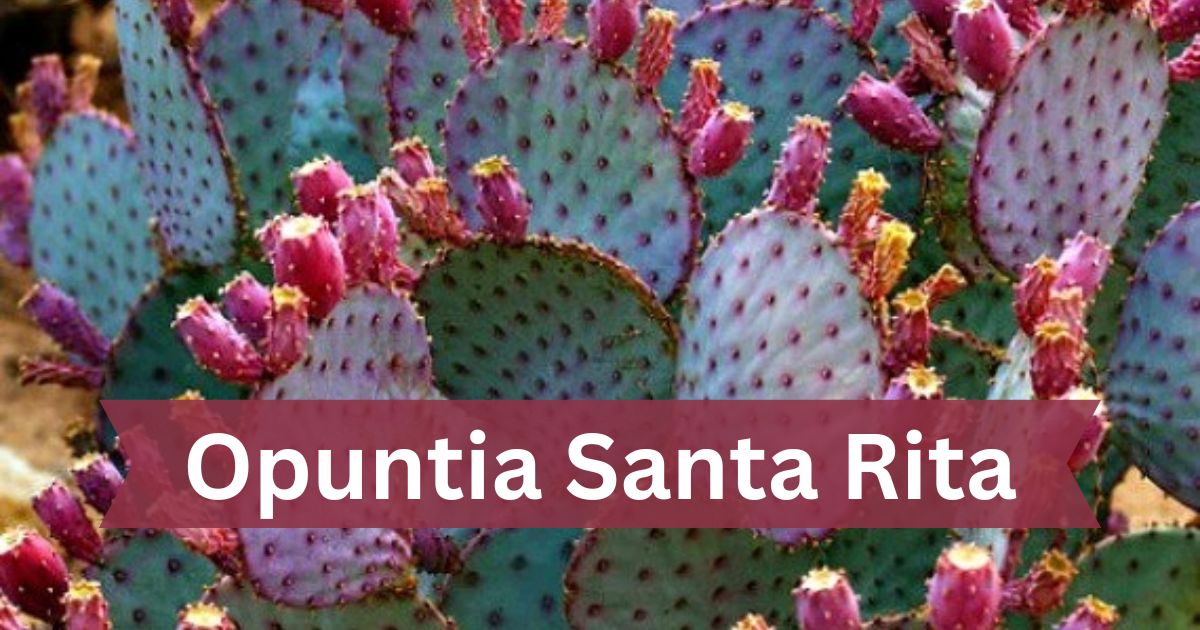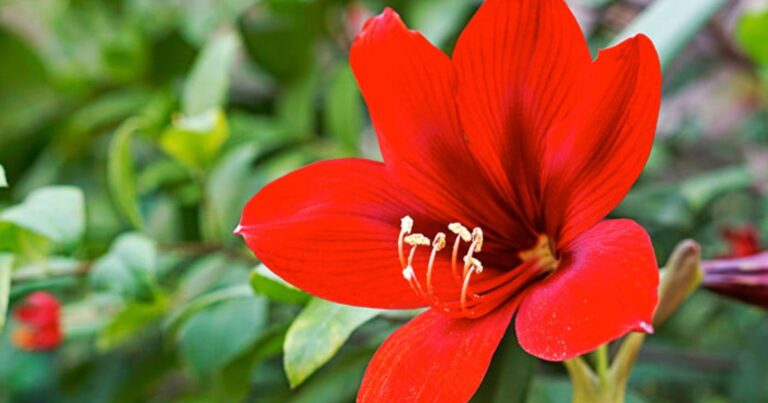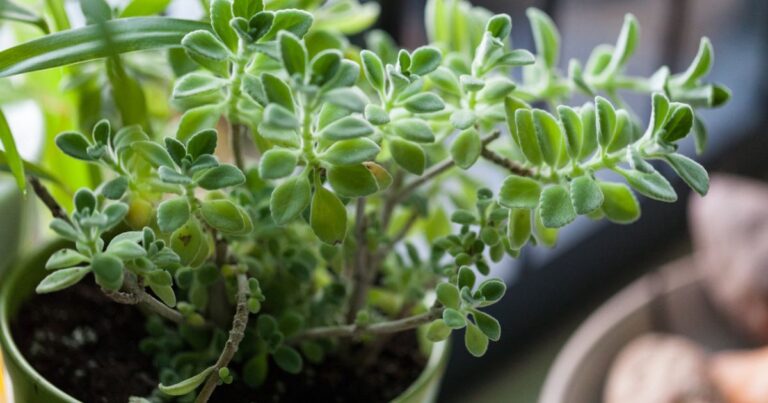Opuntia Santa Rita Care, Growth Rate, Planting And Uses
The Opuntia Santa Rita, with its stunning silvery-green pads and vibrant magenta blooms, is a true desert gem that captivates the eye and enriches the landscape. Let’s explore Opuntia Santa Rita care, exploring optimal growth rates and effective planting techniques while unveiling its versatile uses beyond mere aesthetics.
From its role in water conservation landscapes to potential culinary applications through edible pads and fruit, this cactus offers much more than meets the eye.
What Is Opuntia Santa Rita?
Opuntia Santa Rita, often referred to as The Purple Prickly Pear, stands out not just for its striking beauty but also for its resilience in arid landscapes. This succulent cactus showcases vibrant purple pads that can transition to green under certain light conditions, making it a unique specimen in any garden or natural setting.
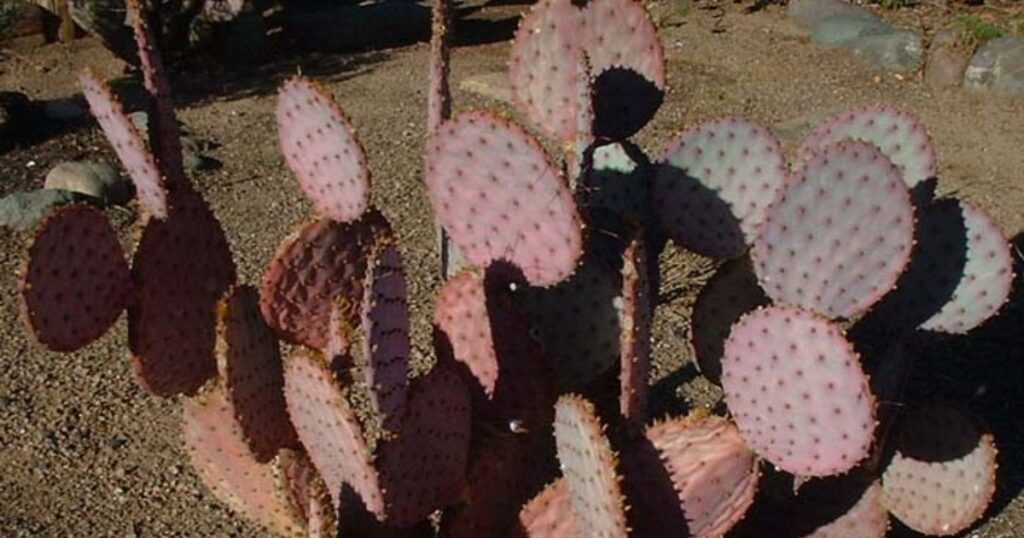
Its vivid hues are complemented by showy yellow flowers that bloom in spring and summer attracting pollinators like bees and butterflies. This remarkable plant is renowned for its adaptability, it thrives in poor soils and withstands extreme temperatures ranging from scorching heat to frost.
How To Plant Opuntia Santa Rita?
Planting Opuntia Santa Rita, to begin, choose a well draining soil mixture ideally one that incorporates sand or gravel to mimic its native arid environment. This ensures the roots won’t become waterlogged, which is crucial for the health of cacti. If you’re planting directly in the ground, consider elevating the bed slightly to enhance drainage.
Cut a healthy pad from an existing cactus, allow it to be callous over for about a week before placing it in soil this minimises rot risk. Arrange your pads horizontally into prepared holes at least three feet apart to accommodate their spread and provide sufficient airflow around each plant.
Opuntia Santa Rita Seeds
Opuntia Santa Rita seeds, sourced from the stunning purple-green pads of the Santa Rita cactus, offer more than just an opportunity for propagation; they serve as a remarkable testament to resilience. Native to the arid regions of Mexico and the southwestern United States.
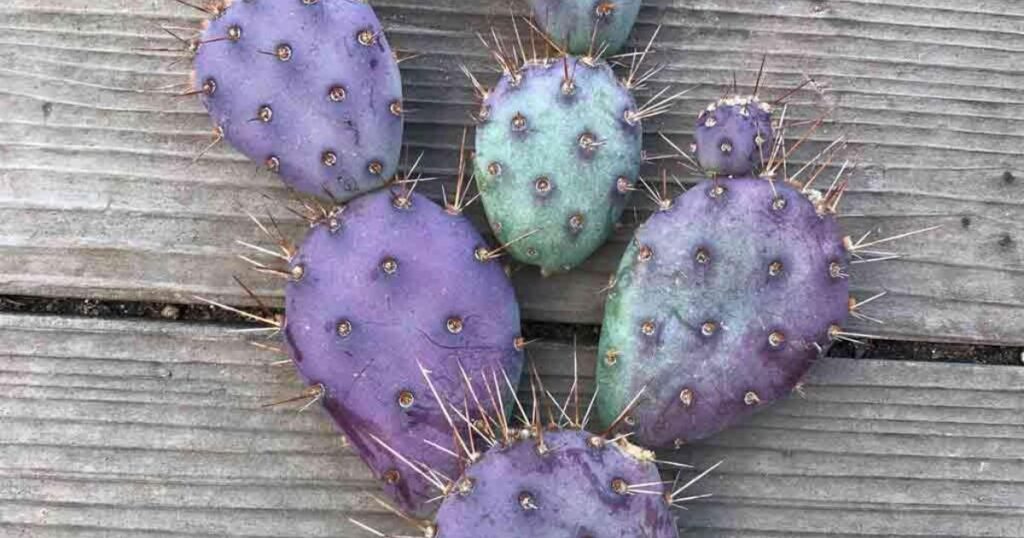
This hardy plant exemplifies how nature adapts beautifully to harsh climates. The seeds are known for their exceptional germination rates, making them a favourite among both novice and experienced gardeners looking to cultivate unique desert flora.
Opuntia Santa Rita Growth Rate
Opuntia Santa Rita, This succulent reaches a height of up to five feet, establishing itself as a striking focal point in xeriscapes and desert gardens. Under optimal conditions full sun exposure and well-drained soil this resilient plant can grow up to 12 inches per year.
This dynamic growth pattern adds an exciting element, gardeners find themselves not only caring for the plant but witnessing its transformation season after season. While Opuntia Santa Rita flourishes in arid environments, it is also remarkably adaptable to varying climates.
This flexibility allows it to thrive even with occasional water supplementation during dry spells or rapid growth phases, leading to lush pads adorned with vibrant fuchsia blooms come springtime.
The Opuntia Santa Rita Care
Caring for Opuntia Santa Rita, Native to the Sonoran Desert, this resilient plant prefers well-draining soil, mixing standard potting soil with sand or perlite to ensure excellent drainage. Sunlight is another crucial factor to position your cactus in full sun for at least six hours daily to maintain its vibrant purple and green hues.
Be mindful of overwatering; these cacti are drought resistant and should only be watered when the soil is completely dry. Another fascinating aspect of Opuntia Santa Rita care involves its seasonal growth patterns.
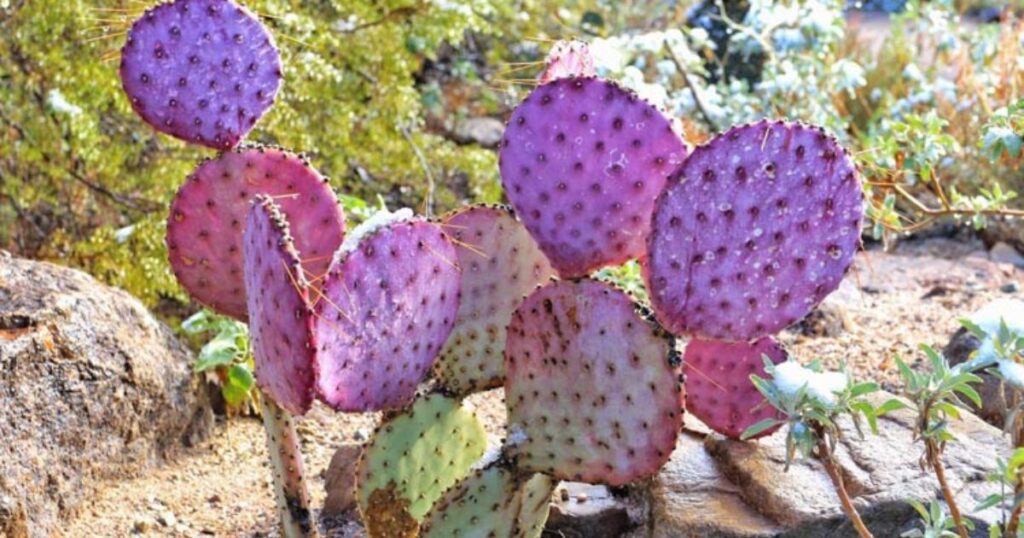
During summer months, this hardy succulent can benefit from balanced fertilisation every six weeks to promote healthy pads and flowers. As temperatures drop in autumn, reduce feeding frequency and allow the plant to enter a dormant state, this rest preserves energy for robust growth once spring emerges again.
What Opuntia Santa Rita Uses And Benefits?
- Culinary Versatility: The pads and fruits of Opuntia Santa Rita are edible. They can be grilled, sautéed, or added to salads for a unique flavour profile rich in nutrients.
- Nutritional Powerhouse: This cactus is packed with vitamins A and C, calcium, magnesium, and antioxidants, promoting overall health and immune support.
- Hydration Hero: Its succulent structure allows it to retain moisture, making it an excellent natural source of hydration for your body when consumed.
- Digestive Aid: Loaded with dietary fibre, Opuntia helps regulate digestion while potentially lowering cholesterol levels and improving gut health.
- Skin Soother: Extracts from the cactus can be utilised in skin care products for their hydrating properties and ability to reduce redness or inflammation.
- Weight Management Ally: Some studies suggest that components within Opuntia may help regulate blood sugar levels and promote feelings of fullness.
- Anti-Inflammatory Properties: Rich in flavonoids and phenolic acids, this plant can combat inflammation-related issues in the body.
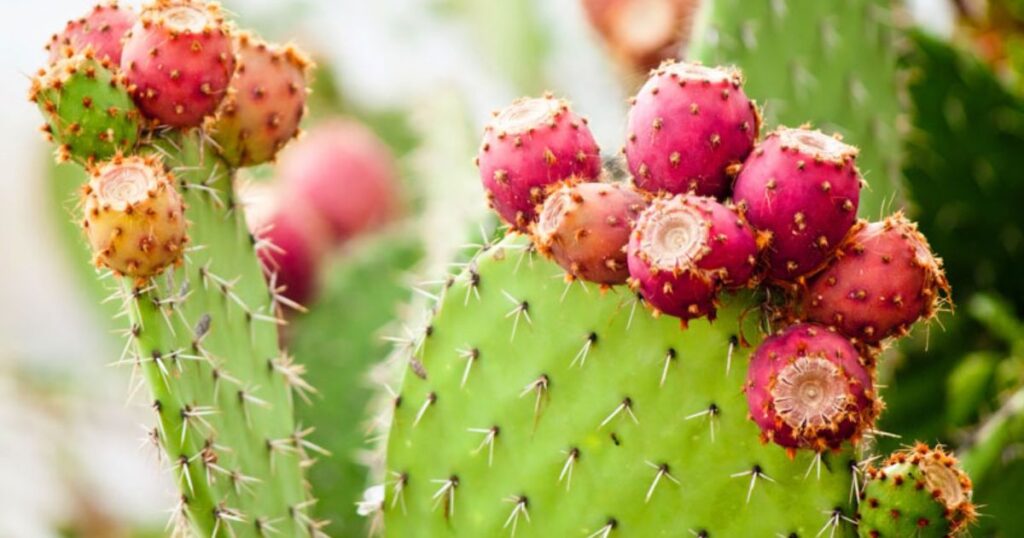
- Garden Beauty: Beyond its uses in cooking and wellness diets, Opuntia Santa Rita adds vibrant colour to gardens with its vibrant purple paddles adorned with yellow flowers.
- Wildlife Habitat Supporter: Its thick pads provide shelter for various wildlife species while producing fruits that attract birds and insects alike.
- Sustainable Choice: Thriving in arid conditions means that cultivating this cactus requires minimal water resources compared to traditional crops, an eco-friendly alternative.
Tips And Fun Facts Of Opuntia Santa Rita
- Sunshine Lovers: This cactus thrives in full sun; ensure it gets at least six hours of direct sunlight daily to bring out its vibrant purple hues.
- Well-Drained Soil: Use a gritty soil mix designed for cacti or succulents, which allows excess water to drain easily and helps prevent root rot.
- Water Wisely: Only irrigate when the soil has completely dried out. During active growth in summer, a deep soak every few weeks is sufficient.
- Fertilise Sparingly: Apply a balanced cactus fertiliser during the growing season to encourage healthy development, but skip it during dormancy in winter.
- Temperature Tolerance: The Santa Rita performs well in USDA zones 8-10, it can tolerate occasional cold snaps down to 20°F (-6°C) if established.
- Colourful Transformation: The vibrant pads change colour based on stress factors such as drought or temperature fluctuations embrace these changes as natural adaptations.
- Edible Delights: Both the pads and fruits (tunas) of Opuntia Santa Rita are edible and can be used in various culinary dishes rich in fibre and antioxidants.
- Wildlife Friendly: Its blossoms attract pollinators like bees and butterflies while providing food for birds that feast on its ripe fruit.
- Cultural Significance: In many cultures, prickly pears symbolise resilience; they thrive even under harsh conditions where other plants may fail.
- Therapeutic Qualities: Indigenous peoples have long recognized their medicinal properties, using them to treat ailments ranging from digestive issues to skin irritations.
Opuntia Santa Rita Vs Prairie Smoke Flower
Comparing the vibrant Opuntia Santa Rita cactus to the delicate Prairie Smoke flower, it’s essential to appreciate how each plant thrives within its unique environment. The Opuntia Santa Rita, with its stunning purple hued pads and striking yellow blooms, showcases the resilience of desert flora.
It not only tolerates extreme heat but also highlights water conservation strategies through its modified leaves. This cactus serves as a powerful example of adaptation—each pad is an intricate reservoir in a landscape where resources are scarce.
Conclusion
This plant Is a resilient and visually striking cactus that can thrive in various environments with proper care and attention. Understanding its growth rate, ideal planting conditions, and Opuntia Santa Rita care requirements will ensure this beautiful plant reaches its full potential.
Whether you are looking to enhance your garden’s aesthetic or utilise it for edible purposes, the versatility of Opuntia Santa Rita makes it an excellent choice for both novice and experienced gardeners alike. With its vibrant colours and unique texture, this cactus not only adds beauty but also stands as a testament to the wonders of desert flora.

